Hiking rejuvenates the soul and keeps you mentally and physically fit, all while enjoying breathtaking views. Most people reside in urban centers. And the majority of these concrete jungles are noisy and overcrowded-basically in chaos, for lack of a better term. Having a few hours out in the wilderness away from the humdrum of city life would be a wise idea. This article focuses on hiking for beginners.
Anyone can be a hiker; as long as you can move around with your feet, you’re good to go. A hike takes just a few hours, and some take weeks or even months, depending on the time you have. If you are thinking about getting started, this piece is for you.
Without further ado, let’s take a look at everything you need to know about hiking.
Factors To Consider Before Going On A Hike
Whether You Are Fit
You can’t just wake up one morning and decide you are going on a hike. Hiking requires one to be physically fit, especially if you are headed to a rugged terrain. It’s impossible to go from being a couch potato to an expert hiker in a few hours.
Assess your physical condition to see that you are up to the task. Hiking should be a fun activity that should leave you feeling energized, not exhausted and in pain. If you are physically unfit or have an underlying medical condition that prevents you from engaging in physically exerting activities, worry not.
You can still choose easier hikes that won’t harm you physically. When your fitness level goes up, you can increase the distance and tackle more challenging terrains. Here’s how to get in shape for hiking.
Knowing The Weather Conditions
Hiking experts advise checking the weather forecast before embarking on any adventure. What happens if you hadn’t bothered about checking the weather and there is a storm in the middle of your hike? It will undoubtedly ruin what would have been a great day outdoors.
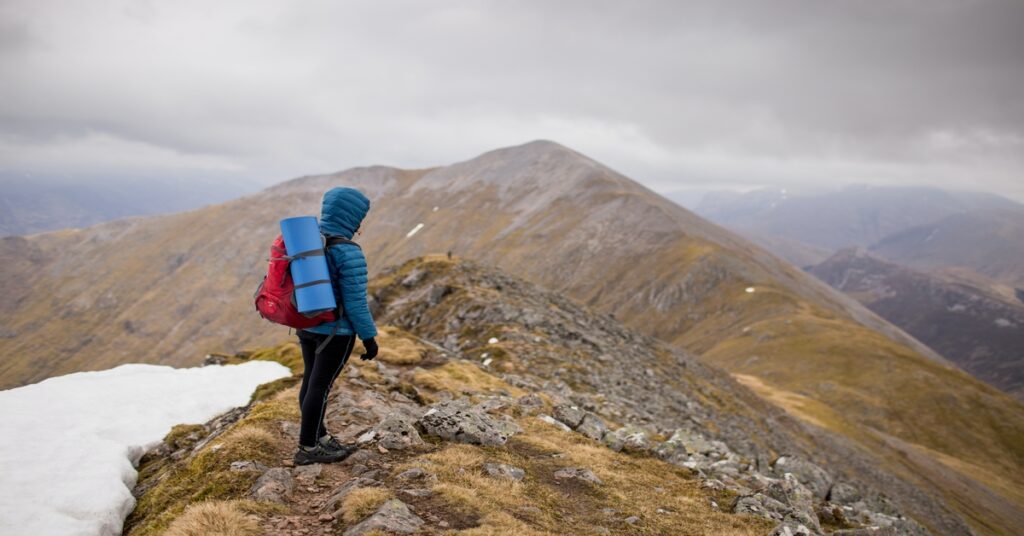
At the start of spring, some trails usually are untraceable, and during fall when the sun sets earlier, be careful not to be outdoors when darkness falls. By knowing what weather conditions to expect, you will keep yourself safe, dress appropriately, and carry the right gear. Check out this guide for hiking in the rain.
Have You Identified Hiking Trails?
Before you go hiking, you need to identify hiking trails near you and start with the one you like. The first place you’d want to check is Google Maps. Just look at the area around you on the map, find parks/trails, and Google more information on them.
To make things easier, search for a trail on Alltrails.com. Just enter the trail, city, or park name and click the search button. You will be provided with all the information you need.
Another way to find great trails is to ask hiking enthusiasts physically or in hiking groups for beginners on social media platforms. Lastly, visit the park where you want to hike in and have the ranger (s) fill you in on the trails’ state.
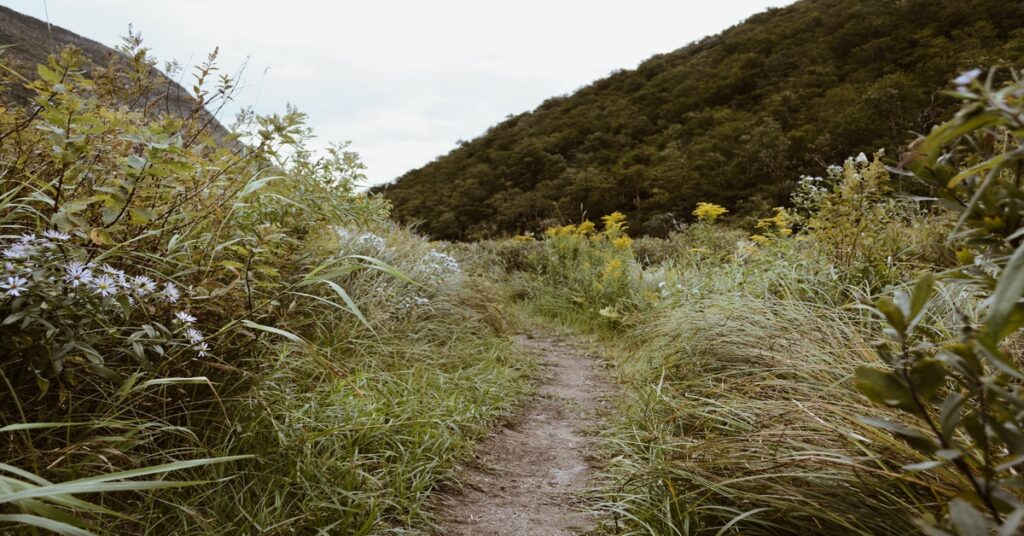
The Time You Will Take Hiking
How long are you going to hike – a full day or just a few hours? Take this into consideration before choosing a trail. That’s why it’s crucial to find out more about the trail to see how long it will take you to get to the end of it. If you plan to hike for a whole day, you would want to be out of the wilderness by dusk. Find out how long it takes to hike 10 miles.
Find Hiking Friends
Consider getting a hiking partner or being part of a hiking group, especially if you are not experienced or the trail has dangerous wild animals. If you’re not comfortable in a group, you can always use the company of a loved one.
Hiking solo is fun and gives you the much-needed freedom from everyone and everything in your daily routine. However, if you’re an inexperienced hiker, forget about it. Find someone to hike with, then when you have gained more experience, you can begin going solo. Besides, walking with a partner provides the perfect opportunity to bond.
Let Family/Friends Know About Your Plans
Whether you are going out on a hike alone or with partners, it’s important that you inform your family or friend about your plans. Tell them exactly what park/city you will be hiking in and let them know when to expect you back.

You never know what might happen when on a hike, especially when you’re alone. You could get hurt and take more time to get out of the park. This is where your family/friend will alert relevant authorities to act. So, it’s always wise to tell someone where you are going and for how long.
Are Pets Allowed?
Some people don’t like leaving their pets (in most cases dogs) behind when going for a hike. That’s fine but before setting out, find out if dogs are allowed in that specific trail. If they don’t, you can leave your four-legged friend at home or find another trail.
Parks that allow pets usually have their own rules to ensure that you won’t interfere with other hikers’ experience. For instance, many parks and trails will need you to have your dog on a leash and carry a poop bag with you. So if you’re planning to go on a hike with your canine friend, ensure that you adhere to the set rules.
Elevation And Distance
On average, a person walks three miles per hour on flat and easy terrain. When going up, it takes more time since you will have to stop many times to catch a breath, particularly if you are carrying a heavy backpack.
William Naismith, a Scottish mountaineer, devised this rule in the late 19th century: for every 3 miles (5 kilometers) forward, add an hour, and for every 600 meters (2000 feet) of ascent, add another hour.
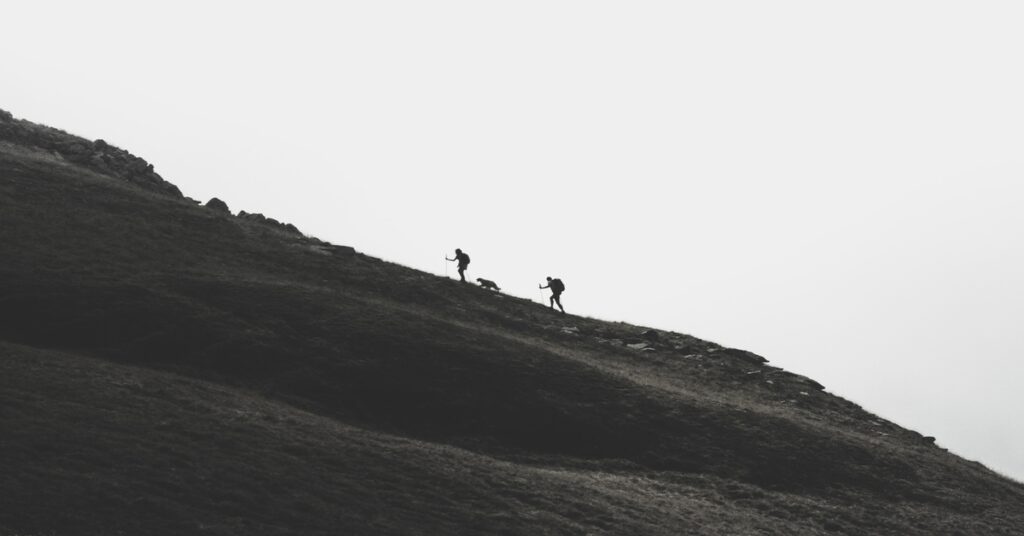
If you are just starting out, it may take some time to master this, but you will as you go on more hikes. You will know what elevation gain your body can manage and the amount of time you will take on an ascent.
Hiking Gear List For Beginners
Before we look at the gear you need for a hike, here are The Mountaineers Ten Essentials every hiker should carry:
- First aid kit
- Knife and gear repair kit
- Sun protection (sunscreen, sun-protective clothing, and sunglasses).
- Enough clothes
- Water
- Shelter for emergencies
- Navigation aids like GPS devices.
- Enough food
- Fire (stove, matches, lighter, and tinder)
- Headlamp/flashlight
What To Wear On A Hike
Full-Length Pants
Wearing pants or leggings is vital. It prevents ticks from getting to your legs and keeps you warm if the weather is cold. Also, you’re better off with pants if the hiking trail contains undergrowth that can scratch your legs.
However, when temperatures are high, you may consider putting on your shorts. If you’re hiking during winter or the rainy season, wear lightweight windproof and water-resistant pants. Ensure that your hiking pants are durable, breathable, and stretchable.
Shirts
Some hiking gurus would advise you to put on a collared shirt to prevent the sun from beating down on your neck, but it’s not a preference for many. If you’re starting, put on that old shirt and hit the road!
Remember to always have on a long-sleeved shirt or t-shirt, except when it’s too hot. It’s recommended that you go with a merino wool t-shirt or shirt as they are breathable, wick away moisture, and don’t keep bad smells.
Hiking Boots
You can’t just wear any type of shoes when going hiking. Well, you can, but you are trying to be as comfortable as possible and avoiding any injuries, right? With hiking boots, preference matters – while some hikers go with over-the-ankle shoes, others prefer low-cut, lightweight trail running shoes.
The latter is excellent if the hiking trail you’re on is smooth with few or no hindrances. But if you are on a challenging trail with obstacles like roots, streams, and rocks, find sturdy hiking boots. Before going out, ensure you are comfortable in your footwear.
Hiking Socks
You shouldn’t wear your hiking shoes without socks unless you want to get blisters and feel uneasy throughout your hike. Avoid ankle socks and go with either tall or short socks. If your trail contains tall grass/vegetation, then you’d want to have on tall socks. And if you wish, you can even tuck your pants in them.
Steer clear of cotton and choose either wool or synthetic socks because they dry quickly when wet. As for the cushioning, you can decide between light, medium, and heavy. If you’re wearing lightweight shoes, you can put on socks with light cushioning. However, medium cushioning is recommended for all seasons, except when it is freezing.
Jacket
Yes, you need a good jacket for a hike! But don’t pick just any other jacket at your local store. First, check to see that it is waterproof, so you don’t get all drenched when it rains.
Secondly, make sure it is heavy enough to give you warmth when it gets cold out there. Lastly, your jacket should be lightweight so it easily fits in the backpack and creates space for other things.
Hat
Don’t forget to carry a hat or two on a hike. You can cover your face and ears using a hat with a hanging brim on a hot day. Most hikers complain about the heat on the back of their necks or the top of their ears on a sunny day. It’s even worse if you haven’t worn sunscreen. A hat can help with this. Also, it keeps hair clean and warms your head when it gets cold. Check out these hiking hats.
Hiking backpack
The last thing you want on a tail is a heavy backpack that seems to suck some energy out of you every minute. Hiking lightly is the only way to avoid this. You will have the ten essentials and any other gear you think is vital for you.
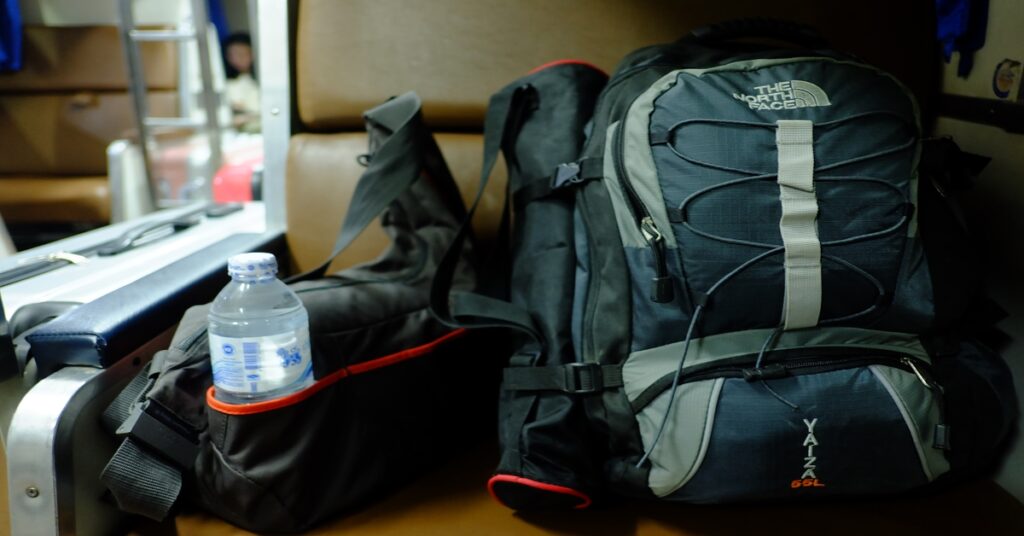
For beginners, you can start with your current backpack. As long as it is light and feels comfortable on your back, then it’s good for a day hike. But for walks that take many hours, you’d better find a specialized hiking backpack. Go to a store that sells outdoor gear and talk with an expert to find a bag that fits your body and style.
Water
Hydration is crucial, especially on hikes that take hours. It’s possible to go for hours without food, but you will have a bad experience when you do the same without water. Water powers you up. So, how much is enough?
Well, I can’t really state the exact amount because dehydration depends on factors such as age, body type, sweat rate, the hike’s difficulty, and weather. The only advice I’ll give you is: carry more water than you need. This way, you won’t have to worry about running out of it.
Food
I wouldn’t wish for any hiker to feel hungry in the middle of a hike, with no food to provide the much-needed energy. Hiking, especially on physically demanding terrain, can weaken you quickly. Pack some and just like water, ensure you carry an extra ration in case your quota runs out somewhere along the trail.
Phone
A phone is essential in the contemporary world. It’s equally as vital on a hike as it could save you in case of an emergency. Keep in mind that if you have a smartphone with you, it doubles as your map, compass, distance tracker, etc.
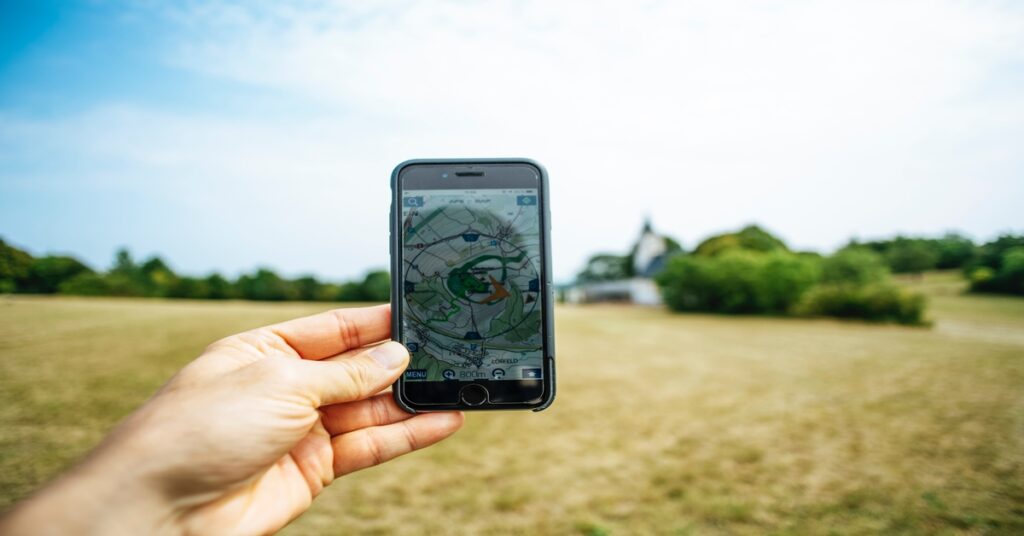
Don’t forget to carry a charger with you if the hike will take several hours or days. Sometimes, your phone may not work in bad weather conditions, so it’s advisable to pack a good GPS device. Also, consider carrying a physical map and compass as you gain more experience.
First Aid Kit
It is best to carry a first aid kit if the hike will take a couple of hours or days. The good thing is, there are probably many stores near you that sell first aid kits. The kit should have items like band-aids, moleskin, disinfectant, and a bandage or two.
Other Things To Bring On A Hike
Bug Spray – You’ll never know if the specific hiking trail you’re going to will be full of bugs. Consider carrying bug spray with you, unless you want bites covering your legs and arms when you finish the hike. If the trail you’re venturing into is full of bears, get a bear spray and have it ready with you at all times.
Sunglasses – you need to protect your eyes on the trail. You’d not want to struggle to see on a sunny day.
Headlamp – when darkness finds you on the trail, it might be hard to avoid falls, particularly if the terrain is uneven. And that’s definitely not the time you’d want to get an injury. Carry a headlamp, and its illumination will enable you to safely and quickly get to the end of the trail.
Hiking poles-hiking poles are also quite important. I’m sure you have seen many hikers with them. Trekking poles provide support to your thighs and knees. By thrusting the pole into the ground and moving forward, you will be giving your upper body muscles the much-needed workout.
Sunscreen – if you’re hiking in hot weather with no trees to reduce the scorching heat, consider getting yourself sunscreen. The back of your neck, cheeks, and ears will thank you for it.
Camera – this is optional. Most hikers love to capture the beautiful scenes they come across on the trail. If you’re going to use your phone, get one with a good camera. For photography enthusiasts, packing a lightweight camera would be a good idea.
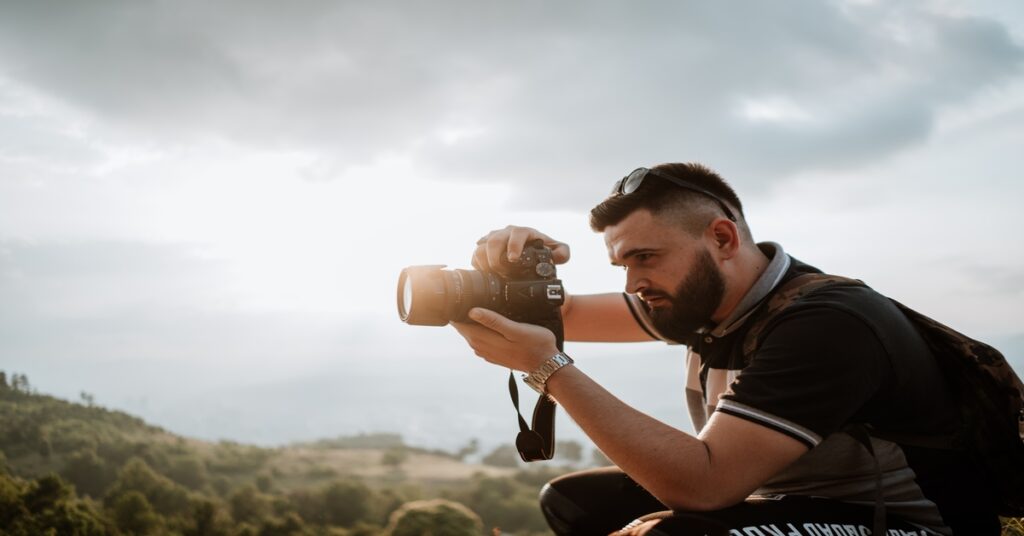
Hiking Tips And Rules
It doesn’t matter if it’s your first hike or you have been doing it for a couple of years. It would help if you observed trail etiquette. Here are some good trail manners:
- Do not litter. We all need to preserve the environment, and it doesn’t stop when you enter a hiking trail. You may think that no one lives there, but can you imagine how the place would look like if it were filled with garbage? Do not leave trash on the trail, and if you find some, pick it up!
- Don’t pluck/pick plants or flowers on the trail.
- Keep off wild animals. Look, but don’t touch or try to feed them.
- Respect other hikers’ space.
- Give hikers going uphill right of way. Keep in mind that when going up a mountain/hill, one uses more energy and time. Also, allow equestrians to pass to avoid any injuries.
There you have it! All you need to know about hiking. It may seem complicated, considering all the things you need to carry and the numerous rules to observe. But it’s not. Once you begin getting used to it, it won’t seem like a chore. If you are a first-time hiker, consider all the tips provided in this guide to improve your experience on the trail.

